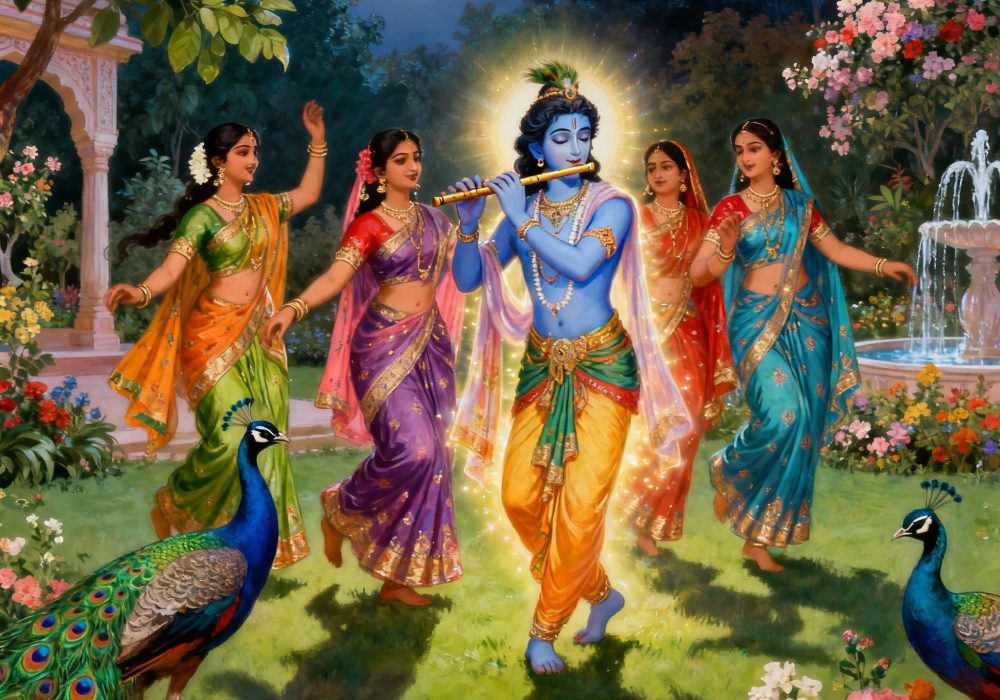
In the peaceful, lush village of Vrindavan, where cows roamed freely and rivers whispered ancient secrets, lived a boy named Krishna. But he was no ordinary child—he was the beloved incarnation of Lord Vishnu, who had come to the Earth to guide and uplift humanity. Known for his playful charm and mischievous smile, Krishna had a special way of touching everyone’s heart.
Among the villagers were the Gopis, the cowherd girls, who adored Krishna not only for his divine powers but also for the love and kindness he showed. Their hearts danced to the sound of his flute, a melody so enchanting that even the winds paused to listen.
One evening, under the silver glow of a full moon, Krishna invited the Gopis to the banks of the Yamuna River. The air was thick with anticipation as joyous laughter and soft whispers filled the night. Krishna, with his radiant blue skin and peacock feather crown, began to play his flute. The music was magical—it spoke of love, devotion, and the eternal bond between the soul and the divine.
One by one, the Gopis joined Krishna in a dance called the Ras Leela. The dance was not just a celebration; it was a mystical experience where time and space seemed to vanish. Each Gopi felt as though Krishna was dancing solely with her, creating a unique and personal connection that transcended the ordinary.
The Ras Leela symbolized the divine love that exists between God and devotee, a love pure and unconditional. It reminded everyone that devotion is not about possession but about surrendering the heart fully, trusting in the cosmic dance of life.
As dawn’s light began to paint the sky pink and gold, the dance gracefully came to an end, but the feelings it stirred remained, inspiring generations to seek a love that is both spiritual and joyous.